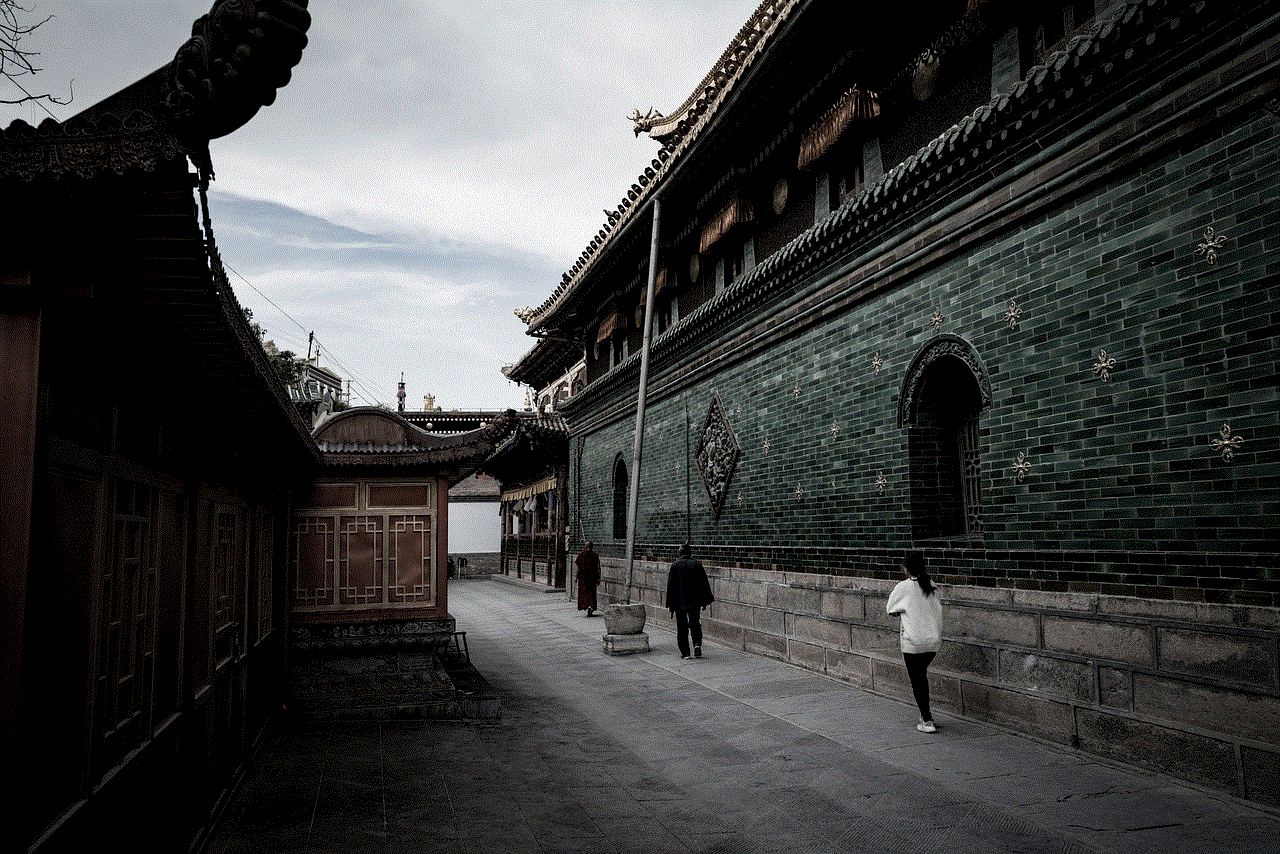apps that hide things
In today’s digital age, privacy has become a major concern for many people. As we increasingly rely on our smartphones and other electronic devices to store personal information, the need for apps that can hide things has also grown. These apps provide a sense of security and control over our personal data, allowing us to keep our secrets safe from prying eyes. In this article, we will explore the world of apps that hide things and discuss their features, benefits, and potential risks.
1. What are apps that hide things?
Apps that hide things, also known as privacy apps, are mobile applications that allow users to hide or lock certain files, photos, videos, and other sensitive data on their devices. These apps offer a variety of features such as password protection, encryption, and decoy options to ensure the security of the hidden content. They are designed to provide a safe and secure space for users to store their private data, away from the reach of others.
2. Why do we need apps that hide things?
With the increasing use of smartphones and other electronic devices, the amount of personal data we store on them has also increased. From personal photos and videos to sensitive documents and passwords, our devices contain a treasure trove of information that we want to keep private. However, the risk of someone accessing this data, whether intentionally or unintentionally, is also high. This is where apps that hide things come to the rescue, providing a layer of protection to our personal data.
3. Types of apps that hide things
There are several types of apps that hide things, each catering to different needs and preferences of users. These include:
– Vault apps: These apps create a secure locker on your device to store private photos, videos, and other files. They usually require a password to access the hidden content.
– Decoy apps: These apps have a dual purpose. They can hide your sensitive data and also act as a decoy to distract others from finding the real hidden content. For example, a decoy calculator app may have a hidden vault behind a fake calculator interface.
– Private browsing apps: These apps allow users to browse the internet without leaving any trace on their devices. They also have a secure mode that hides your browsing history, cookies, and other data from others.
– Private messaging apps: These apps offer end-to-end encryption for your messages, ensuring that only the intended recipient can read them. Some of these apps also have the option to hide your conversations behind a password or a disguise.
4. Features of apps that hide things
The features of apps that hide things vary depending on the type and purpose of the app. However, some common features include:
– Password protection: Most privacy apps require a password to access the hidden content, ensuring that only the authorized user can view it.
– Encryption: Some apps use encryption to protect the hidden data, making it unreadable to anyone without the decryption key.
– Decoy options: As mentioned earlier, some apps have decoy options to trick others into thinking that they have accessed the hidden content when, in reality, they are looking at a fake file or interface.
– Cloud backup: Some apps offer the option to back up your hidden data to the cloud, providing an extra layer of protection in case your device gets lost or stolen.
– Intruder detection: Some apps have a feature that captures a photo of anyone who tries to access the hidden content without the user’s permission.
5. Benefits of using apps that hide things
There are several benefits to using apps that hide things, including:
– Privacy and security: The primary benefit of these apps is the protection of your personal data from unauthorized access, ensuring your privacy and security.
– Organizational tools: These apps allow you to organize your files and data in a secure manner, making it easier to find and access when needed.
– Peace of mind: With the assurance that your sensitive data is safe and hidden, you can have peace of mind and not worry about someone accidentally stumbling upon it.
– Dual purpose: Some apps that hide things also offer additional features such as private browsing, messaging, and cloud backup, making them a versatile tool for managing your privacy.
6. Risks associated with using apps that hide things
While apps that hide things offer many benefits, there are also some risks associated with using them. These include:
– Malware: Some apps may contain malware or be disguised as legitimate apps, putting your device and personal data at risk.
– Data loss: If you forget your password or lose access to your device, you may not be able to retrieve your hidden data, resulting in loss of important information.



– False sense of security: Some apps that claim to hide your data may not be as secure as they claim, giving you a false sense of security.
7. Popular apps that hide things
There are numerous apps that hide things available on both Android and iOS platforms. Some popular ones include:
– Keepsafe Photo Vault: This app allows users to hide photos, videos, and documents behind a secure password or PIN. It also has a feature to back up your hidden data to the cloud.
– Hide It Pro: This app offers a wide range of features, including a secure vault, private browsing, and a decoy option. It also has a built-in image editor and a feature to hide the app itself.
– Signal Private Messenger: This app is known for its high level of encryption and security for messaging and voice calls. It also has the option to lock your conversations behind a password or biometric authentication.
– Firefox Focus: This private browsing app automatically blocks ads, trackers, and other data collection tools, ensuring your browsing history remains private.
8. Tips for choosing the right app
With so many apps that hide things available, it can be overwhelming to choose the right one. Here are some tips to keep in mind while selecting an app:
– Read reviews and check the app’s ratings before downloading it.
– Stick to popular and reputable apps that have been around for some time.
– Look for apps that offer frequent updates and have good customer support.
– Check the app’s permissions and only grant access to the necessary ones.
– Avoid downloading apps from unknown or untrustworthy sources.
9. Alternatives to apps that hide things



If you are not comfortable using apps that hide things or want to explore other options, there are some alternatives available. These include:
– Locking individual apps: Some devices have the option to lock specific apps using a password or biometric authentication, providing a similar level of protection as privacy apps.
– Password-protecting files: You can also password-protect individual files or folders using built-in features or third-party apps.
– Encrypting your device: Most devices have an option to encrypt all the data on your device, making it unreadable without the correct password.
10. Conclusion
In conclusion, apps that hide things offer a convenient and secure way to protect your personal data from prying eyes. They come with a variety of features and benefits, but also have some risks that users should be aware of. With the increasing focus on privacy and security, these apps have become an essential tool for many individuals. However, it is important to be cautious while choosing an app and to also explore other alternatives for protecting your personal data.
tiktok fire challenge gone wrong
The tiktok -parental-control-effectively-in-2023″>TikTok Fire Challenge has been making its rounds on social media platforms, garnering attention from teenagers all over the world. This viral challenge involves participants pouring a flammable liquid, such as rubbing alcohol or gasoline, on their body and setting it on fire for a few seconds while recording the act on TikTok . The goal of this challenge is to capture the moment on camera and gain likes and views on the video-sharing app. However, what may seem like harmless fun has turned into a dangerous trend that has resulted in serious injuries and even death.
The Fire Challenge first gained popularity on YouTube in 2012, with many videos showing teenagers setting themselves on fire and jumping into a pool or shower to put out the flames. However, with the rise of TikTok, this challenge has resurfaced and is even more popular than before. The hashtag #firechallenge has over 200 million views on TikTok, with thousands of videos being uploaded every day. This has raised concerns among parents, educators, and authorities about the potential dangers of this challenge.
The appeal of the TikTok Fire Challenge is the instant gratification and attention that participants receive from their peers. In today’s society, where social media is a crucial part of teenage life, the need for validation and recognition is at an all-time high. The Fire Challenge provides an easy way for teenagers to gain likes and views on their videos, which can increase their popularity and status among their peers. However, this desire for attention has resulted in many young people engaging in dangerous and life-threatening activities without fully understanding the consequences.
One of the most significant dangers of the TikTok Fire Challenge is the risk of severe burns and injuries. Many participants use flammable liquids that are not meant to be used on the body, such as rubbing alcohol or gasoline. These substances can quickly catch fire and cause serious burns, not only on the skin but also in the airways if inhaled. In some cases, the fire can spread to clothes and furniture, causing property damage and potentially harming others. The risk of burns is especially high for young teenagers who may not have the necessary judgment and maturity to handle such dangerous substances.
Moreover, the Fire Challenge also puts a strain on emergency services and healthcare facilities. In recent years, there have been several reported incidents of teenagers being rushed to the hospital with severe burns and injuries caused by the TikTok Fire Challenge. This not only puts a strain on medical resources but also takes away vital attention and care from other patients who genuinely need it. In some cases, the injuries sustained from this challenge can be life-threatening, resulting in long-term physical and emotional consequences for the individuals involved.
The TikTok Fire Challenge has also raised concerns about the influence of social media on young minds. With the rise of social media platforms like TikTok, teenagers are exposed to a constant stream of content that can have a significant impact on their behavior and decision-making. The Fire Challenge is just one example of how a viral trend on social media can quickly spread and influence impressionable minds. This raises questions about the responsibility of social media companies to monitor and regulate the content being shared on their platforms.
In response to the growing concern over the TikTok Fire Challenge, many authorities and organizations have issued warnings and advisories to raise awareness about the dangers of this trend. The National Fire Protection Association (NFPA) has released a statement stating that “setting yourself on fire is never a safe practice, regardless of the reason.” They have also urged parents to talk to their children about the potential consequences of participating in such challenges and to monitor their online activities closely.
Furthermore, some schools have taken action to educate their students about the dangers of the TikTok Fire Challenge. In some cases, schools have even banned the use of TikTok during school hours to prevent students from accessing such content. This highlights the need for parents and educators to have open and honest conversations with teenagers about the risks associated with social media and the importance of making responsible decisions.



The Fire Challenge has also sparked debates about the role of parents in monitoring their children’s online activities. Many argue that it is the responsibility of parents to ensure that their children are participating in safe and appropriate activities, both online and offline. However, others argue that social media platforms should take more responsibility for the content being shared on their platforms and implement stricter guidelines and regulations to prevent dangerous challenges like the Fire Challenge from going viral.
In conclusion, the TikTok Fire Challenge is a dangerous trend that has gained popularity among teenagers on social media platforms. What may seem like a harmless challenge for likes and views can have severe consequences, including severe burns, injuries, and even death. It is essential for parents, educators, and authorities to work together to educate young people about the dangers of participating in such challenges and to monitor their online activities closely. Moreover, social media companies must also take responsibility for the content being shared on their platforms and implement necessary measures to prevent dangerous challenges from going viral. As for the teenagers who are tempted to participate in the Fire Challenge, it is crucial to remember that nothing is worth risking your life, and the temporary validation from social media is not worth the potential consequences.